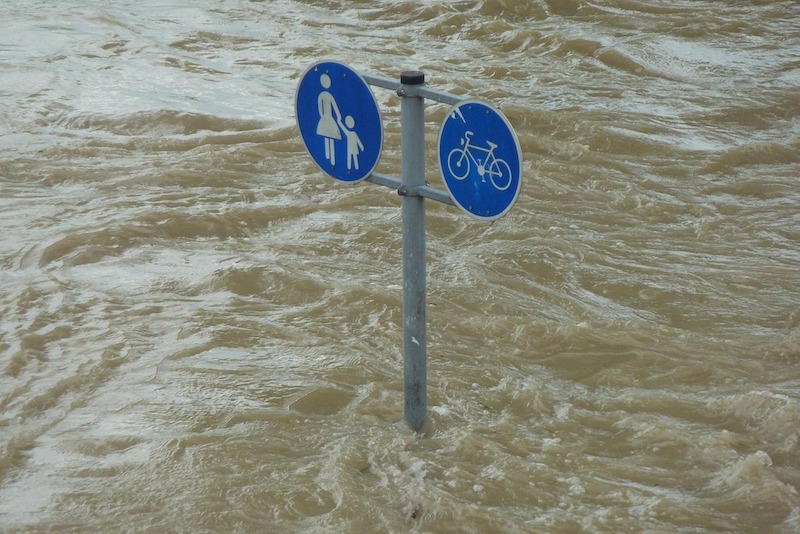The global engineering firm Arup has joined forces with First Street Foundation, a nonprofit that specializes in climate science and flood modeling, for the purpose of co-creating products that provide climate risk data for various property types.
This partnership will combine Arup’s expertise in risk and resilience engineering with First Street Foundation’s datasets for climate-adjusted national disasters. The goal of this collaboration, according to the firms, is to gauge the risk from climate change on the built environment, and to support organizations and entities that help mitigate that risk.
In 2020, there were 22 separate billion-dollar weather and climate disasters across the U.S., which also experienced a record number of named tropical storms (30), 12 of which made landfall, according to National Oceanic and Atmospheric Administration’s National Centers for Environmental Information. Through July 9, there have been another eight weather/climate disaster events this year with losses exceeding $1 billion.
RISK ASSESSMENT REPORTS AND DATA
“The threat of experiencing severe environmental disaster is accelerating in the United States due to the reality of a changing climate,” asserts First Street Foundation’s Founder and Executive Director Matthew Eby. “Partnering with Arup allows First Street Foundation to leverage our data and climate hazard modeling capacities to enable a fuller understanding of the extent and nature of the risks to the built environment.”
In June 2020, the Foundation released its First National Flood Risk Assessment for the continental U.S., which it produced in partnership with researchers and hydrologists from Fathom, Rhodium Group, and academic institutions. That report identifies the equivalent of 14.6 million properties across the country at substantial risk from climate change, of which 5.9 million properties and their owners were unaware of that risk. The Foundation also released FloodFactor.com, a website that uses the Foundation’s national flood model to provide probable climate-adjusted flood risk for every American home.
Last February, the Foundation released its Cost of Climate national report, which applies the Foundation’s flood model to an analysis of depth-damage functions from the U.S. Army Corps of Engineers to estimate average annual loss for residential properties today and into the future. This study finds nearly 4.3 million residential homes with substantial flood risk that would result in financial loss. To insure these homes through the National Flood Insurance program would require increasing premium rates 4.5 times to cover the estimated risk in 2021, and 7.2 times to cover the growing risk by 2051.
The Foundation’s data are leveraged by all levels of government and industry. And its partnership with Arup allows the Foundation to continue its efforts to provide critical insights to businesses and policy makers.
A LONGTIME CONCERN
Arup’s specialty—via its multidisciplinary team of engineers, planners, and analysts—is guiding companies and organizations toward greater resilience. This has been a concern of the firm for at least a decade: In 2012, for example, it rolled out its City Resilience Index, developed with The Rockefeller Foundation, and comprised of 52 indicators based on responses to 156 questions.
Arup currently provides end-to-end climate risk and strategic resilience advice for a diverse range of projects that include university campuses, data centers, tech companies, manufacturers, real estate developers, healthcare providers, and utility and transit operators.
Ibrahim Almufti, Arup’s Resilience Leader in San Francisco, states that as climate change intensifies, “it is increasingly important to prepare organizations and adapt assets for the future. Teaming with First Street Foundation allows us to scale our advisory so that it benefits more people, organizations, and communities.”
Arup and First Street Foundation plan to announce what initiatives and products they are developing “in the near future.”
Related Stories
Resiliency | Jan 2, 2024
Americans are migrating from areas of high flood risk
Americans are abandoning areas of high flood risk in significant numbers, according to research by the First Street Foundation. Climate Abandonment Areas account for more than 818,000 Census Blocks and lost a total of 3.2 million-plus residents due to flooding from 2000 to 2020, the study found.
Sustainability | Jan 2, 2024
Los Angeles has plan to improve stormwater capture and source 80% of water locally
Los Angeles County’s Board of Supervisors voted for a plan to improve stormwater capture with a goal of capturing it for local reuse. The plan aims to increase the local water supply by 580,000 acre-feet per year by 2045.
75 Top Building Products | Dec 13, 2023
75 top building products for 2023
From a bladeless rooftop wind energy system, to a troffer light fixture with built-in continuous visible light disinfection, innovation is plentiful in Building Design+Construction's annual 75 Top Products report.
Codes and Standards | Nov 27, 2023
Hoboken, N.J.’s street design policies are saving lives
Transportation policies enacted in Hoboken, N.J. over the past several years are paying off in the form of fewer pedestrian deaths and injuries. The city has adopted daylighting, bike lanes, lower speed limits, and intersection redesigns to make its roads safer.
Resiliency | Nov 27, 2023
All levels of government need to act to cope with climate-driven flooding and sea level rise
The latest National Climate Assessment highlights the need for local, state, and federal governments to adopt policies to mitigate the effects of climate-driven flooding and sea level rise, according to a policy expert with the National Resources Defense Council.
Resiliency | Nov 16, 2023
How inclusive design supports resilience and climate preparedness
Gail Napell, AIA, LEED AP BD+C, shares five tips and examples of inclusive design across a variety of building sectors.
Codes and Standards | Nov 10, 2023
Washington state building codes to protect structures from wildfire provoke controversy
New building codes in Washington state intended to protect structures from wildfires are provoking backlash from builders, cities, and environmentalists. Critics charge that the rules that are scheduled to take effect March 15 are confusing, will increase housing costs, and could cause too many trees to be cut down.
Sustainability | Nov 1, 2023
Researchers create building air leakage detection system using a camera in real time
Researchers at the U.S. Department of Energy’s Oak Ridge National Laboratory have developed a system that uses a camera to detect air leakage from buildings in real time.
Resiliency | Oct 19, 2023
Jacksonville unveils 50-year strategy for resiliency to flooding, extreme heat, wildfires
The City of Jacksonville, Fla., recently released plans for Resilient Jacksonville, a 50-year resiliency strategy to reduce the risks from flooding, hurricanes, excessive heat, and wildfires, and to respond better to those events. The plan includes ways to stop the St. Johns River from flooding vulnerable neighborhoods, including those prone to flooding during heavy rain or hurricanes.
Engineers | Oct 12, 2023
Building science: Considering steel sheet piles for semi-permanent or permanent subsurface water control for below-grade building spaces
For projects that do not include moisture-sensitive below-grade spaces, project teams sometimes rely on sheet piles alone for reduction of subsurface water. Experts from Simpson Gumpertz & Heger explore this sheet pile “water management wall” approach.

















